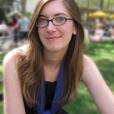In 2009, there were nearly 95,000 degrees awarded in psychology in America, some 88,000 in arts and music, and over 53,000 in English – but in chemical engineering? Just 5,894.
The dearth of graduates in many science, math, engineering and technology majors (known as STEM fields) also shows up in the job market. According to a 2012 report by Manpower Group, 49 percent of employers surveyed in the U.S. said they were having difficulty filling jobs – with engineers being the second most difficult position to fill behind skilled trades workers.
The lack of qualified graduates has many experts wondering if science education is partly to blame. Though the number of college freshmen declaring a major in science, math, engineering or technology is on the rise – nearly 60 percent of those students will change majors or drop out, suggesting that perhaps somewhere along the way, students start to feel lost.
RELATED: How to Build a Better Entrepreneur
Alan Alda, best known for his Emmy-winning role as Hawkeye Pierce in the hit TV series M*A*S*H, and currently a visiting professor at the Stony Brook School of Journalism in New York and on the board of The Center for Communicating Science, wants to change this – specifically by changing the way scientists talk about their work.
Though Alda never pursued an academic degree in science, he spent over 10 years interviewing some 700 scientists as the host of Scientific American Frontiers on PBS, and saw first-hand how difficult it was for scientists to explain complex topics to a mass audience.
A year ago, when writing a guest editorial for Science magazine, he remembered a moment as an 11-year-old when he asked his teacher to explain what a flame was, and she couldn’t give him a clear answer. The memory inspired his new venture called the Flame Challenge, which every year poses a difficult question to scientists all over the world. The scientists submit the best, most creative answer they can come up with, and each submission is judged by a jury of 11-year-olds. The question for the second year of the challenge was recently announced: ‘What is time?’
The Fiscal Times talked with Alda about the Flame Challenge and science education in America.
The Fiscal Times (TFT): Why the Flame Challenge?
Alan Alda (AA): When I was 11 years old I was fascinated with a flame at the end of the candle. I asked the teacher and she took a little pause first and said, ‘It’s oxidation.’ That’s all she said. I didn’t know what oxidation was, I didn’t know anything.
[The Flame Challenge] is about going back to the 11-year-old that I was and asking scientists to explain a flame in a way that was engaging. It turned into a surprise hit. We had some 800 scientists all over the world writing in or submitting animated cartoons, and real 11-year-olds were the judges of the contest. The [judges’] most common complaint was, ‘We don’t like these short simple ones with one sentence. We want more information.’ They also enjoyed the entries if they were entertaining, but they didn’t like them if they were too silly. As one boy said, ‘We’re 11, not 7.’
This year, the question ‘What is time?’ is a very deep question, so it’s going to be a really good challenge. The point of this contest is not to come up with the best answer to teach an 11-year-old. That’s what it looks like – but it’s really to help the scientist understand how difficult it is to explain something they understand to someone who doesn’t have any training in it. The basis of good science communication is to understand what’s going on in the other person’s head. You don’t swamp them with jargon or complex processes, but go step by step and only tell them as much as they need to know for the time being. In a way, you need to excite their curiosity more than give them a definitive answer. That’s the challenge for the scientist.
TFT: Seems like it’s partly about asking the “dumb” questions.
AA: It is. I had to learn to do that. Not only is there no shame in it, but that’s the only way you learn. If you don’t ask the truly naive question, you run the danger of saying something that the scientist can’t answer because you box them in. It’s hard to ask questions when you think you already know [the answer].
TFT: At what age should we get kids interested and involved in science?
AA: I have three daughters and 8 grandchildren, and what I’ve observed is that kids are natural scientists from the minute they’re born. They’re exploring nature and trying to understand it. It starts before we formally start teaching them, and that natural curiosity is fertile grounds for teaching science and everything else. It’s a good idea to start with what they want to know, rather than start with what they don’t care about – because eventually they’ll care as long as they follow their interests into it.
TFT: Do you think this gets lost in formal education?
AA: It does – I believe that the better communicators scientists are the better science education will be.
At the Center for Communicating Sciences at Stony Brook University, we give science students courses on communication. If you tell people something and don’t pay any attention as to whether or not they understood point b before you get to point c, then they’re going to miss the boat.
TFT: What could universities do to help this?
AA: What I would like to see happen is to have courses in communication as part of the regular science education. At Stony Brook, dozens of graduate students are taking courses in oral presentation, written, and communication through new media – and in at least one case, the department mandates that they take these courses. A couple other universities are beginning to affiliate with us and start programs. There’s a growing understanding that studying communication in a long-term, methodical way is beneficial – not just a quick two-hour course at the end of your studies where you learn how to speak in sound bites to the TV camera. That’s really not going to improve communication.
TFT: How does the Stony Brook program do this?
AA: We train people to actually make contact with the audience. We teach scientists improvisation. The most affective outcome of improvisation is that you get tuned into the other person – you can’t do improv without observing the other person and opening yourself up to them. When the students take that training and face the audience, they relate to the audience as if they’re warm humans. And the audience feels it. They hear it in the tone of voice, they hear it in the language, which is more accessible and in the train of ideas. They tell the audience one idea that follows another and by looking at their faces they’re able to tell if they’re getting it. So there’s a tremendous shift in communication abilities among the people who take this training.
What’s interesting is scientists get so comfortable talking about their work, that whereas originally they may have had to memorize a speech or read it, when they’re finished with this training, they can get up and talk about it as if they know it – which they do, but they didn’t feel comfortable allowing themselves to be spontaneous about it, and use the words that come to the mind in the moment. Those words come to you because of what you’re getting from the audience. Communication is a two-way street and they learn that and it becomes part of their lives.
TFT: Have you always been interested in the sciences?
AA: I have. When I was 6, I used to do what I thought were experiments. I’d grab things around the house and mix them together and see what would happen. Fortunately, I couldn’t reach the shelves where the dangerous things were.


